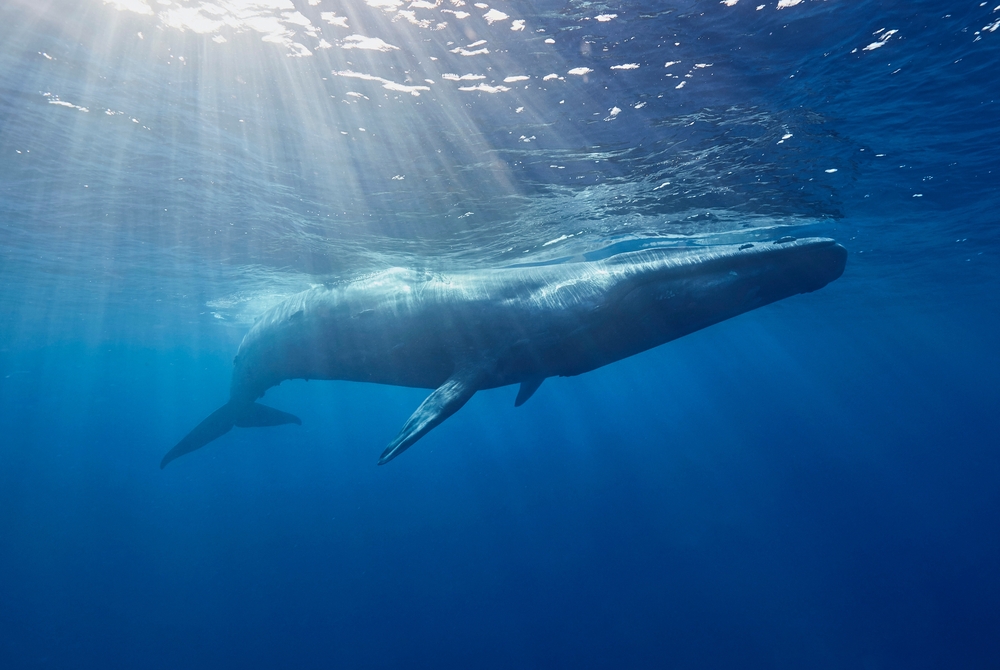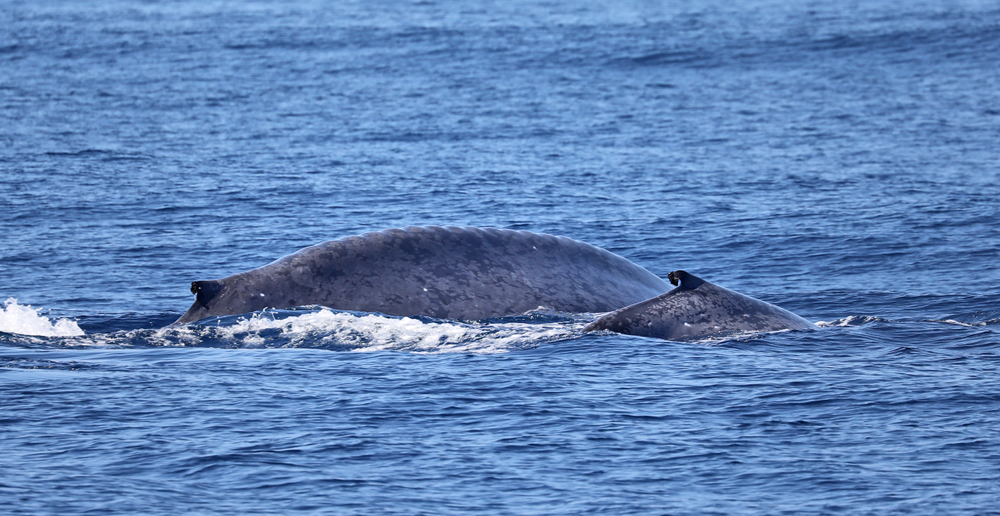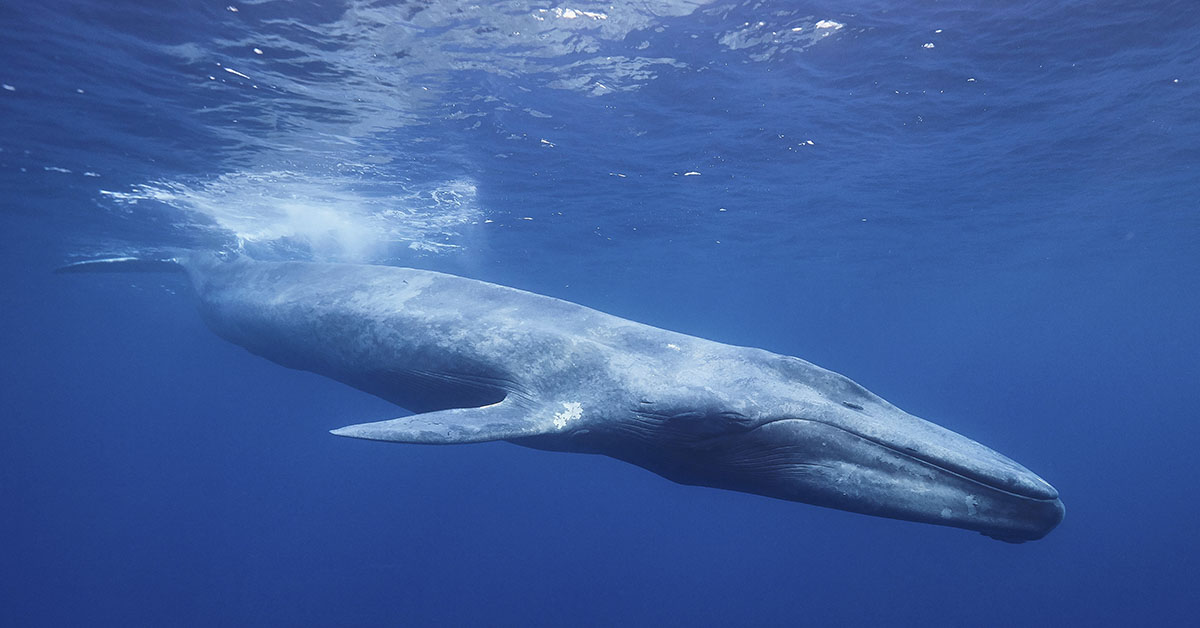Blue whales are the largest animals on the planet. They are powerful swimmers that migrate long distances to feed and breed, and live in every ocean except the Arctic. On average, they live around 80 to 90 years. They are also one of the loudest animals on Earth. They can communicate through groans, moans, and pulses to other whales up to a thousand miles away. Researchers at the Monterey Bay Aquarium Research Institute have monitored the songs of blue, fin, and humpback whales off the coast of California for six years. Incidentally, they documented a large drop in blue whale vocalization, and going silent is a scary pattern for such an endangered species.
The Rise and Fall of Whale Songs

Many people believe there are no sounds underwater, but this is far from the truth. Human ears are not adapted to these sounds, making them seem muted. Therefore, researchers use a hydrophone, a sort of microphone they tether to the seafloor, to hear and record the oceanic symphony. “Once you truly start listening to how many things make sounds in the ocean, it’s really amazing what you hear,” says Jarrod Santora, an ecosystem oceanographer and research biologist for the National Oceanic and Atmospheric Administration (NOAA), to National Geographic.
For this study, researchers use hydrophones to document whale songs to learn about their patterns. “It wasn’t until I plugged in a hydrophone that I realized this world of sound can help us understand human impacts, nature, and the balance between,” says John Ryan, biological oceanographer at the Monterey Bay Aquarium Research Institute (MBARI). By chance, they began recording in July 2015, when a massive marine heatwave was striking the region of central California Current Ecosystem. The scientists noted how different species responded to the resulting environmental changes.
Blue whales and fin whales eat krill and little else. Meanwhile, humpback whales have a wider diet of krill and other crustaceans and small schooling fish like herring and mackerel. Therefore, the heatwave didn’t seem to impact their songs. But it hurt the other whales when it reduced the krill population and triggered the growth of toxic algae. “It caused the most widespread poisoning of marine mammals ever documented. These were hard times for whales,” says Ryan. As their food supply dwindled, blue whale songs reduced by 40%, according to the MBARI’s study published in February. “When you really break it down, it’s like trying to sing while you’re starving,” Ryan says. “They were spending all their time just trying to find food.”
Blue Whales Going Silent during “The Blob”

The marine heatwave was dubbed “The Blob” since it was a literal blob of persistently warm water, and it began in late 2013. It peaked in 2015, which is when the study began, and the year the researchers picked up the least amount of whale vocalizations. But as the temperatures cooled and the ecosystem recovered, the whales began “singing” again. So although the whales went “silent” for a time, they have gotten louder until 2018. Then their songs quietened again between 2018 and 2020, then increased again in 2021. Scientists believe their vocalizations reflect the availability of food. Since humpback whales can switch to a different prey, their songs were relatively unaffected.
“In the case of blue whales especially, they can’t switch prey, so they simply have to search farther and wider for the only prey they eat,” says Ryan. “We can imagine that if they have to dedicate much more time and energy to foraging, then there will be less time and energy available for other behaviors.” This research was consistent with a 2023 study that found a reduction of blue whale vocalizations near New Zealand during summer heatwaves in 2016 and 2018. Ryan reassures that blue whales have not gone silent since 2021.
Threats to Blue Whale Populations

According to the NOAA, blue whales are classified as an endangered species under the Endangered Species Act. Historically, humans hunted them until near extinction for their oil and meat before it was banned. Still, they face multiple threats from human activity. Many blue whales are injured or killed in vessel strikes. They get entangled in fishing gear and end up dragging it for long distances. This can injure or kill them, or compromise their ability to feed or reproduce. Climate change is another issue, since greenhouse gas emissions trap more solar energy and make the ocean more vulnerable to heatwaves.
In fact, a study published in the Proceedings of the National Academy of Sciences found that ocean heatwaves have become three times as long since the 1940s, and are 1°C to 5°C hotter. “We were interested in understanding blue whale ecology,” says Dawn Barlow, ecologist and lead author of the study. “And without trying, we ended up studying the effects of marine heatwaves, which, in this day and age, is hard to avoid when working in the ocean.” The MBARI study and this New Zealand study indicate how warmer waters led to blue whale populations going silent.
More threats include habitat degradation, pollution, vessel disturbances, and man-made ocean noise from global shipping, construction, naval exercises, and exploration for oil and gas. It’s unclear exactly how ocean noise impacts blue whales, but scientists are concerned about temporary or permanent hearing loss, stress responses, avoidance of regular migratory paths and habitats, and disrupted communication behaviors. The latter is particularly worrisome for whales. They depend on their songs to speak with their kin, and potentially navigate darker depths. The NOAA and other institutions are investigating the impact of ocean noise and how to protect marine species and their habitats from it.
Read More: One Day, Whales Might Join the Conversation — In Their Own Language

